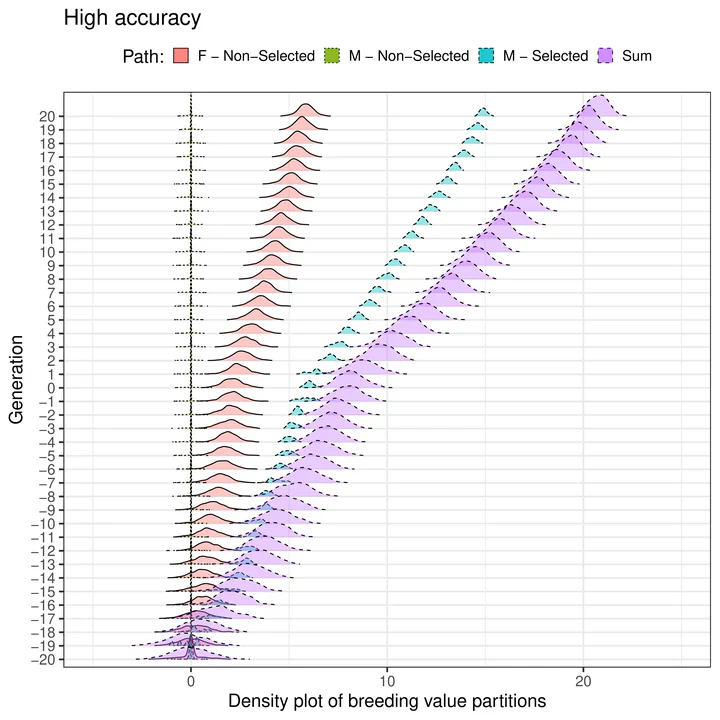A method for partitioning trends in genetic mean and variance to understand breeding practices
 Image credit: Thiago P. Oliveira
Image credit: Thiago P. OliveiraIn breeding programmes, the observed genetic change is a sum of the contributions of different groups of individuals. Quantifying these sources of genetic change is essential for identifying the key breeding actions and optimizing breeding programmes. However, it is difficult to disentangle the contribution of individual groups due to the inherent complexity of breeding programmes. Here we extend the previously developed method for partitioning genetic mean by paths of selection to work both with the mean and variance of breeding values. We first extended the partitioning method to quantify the contribution of different groups to genetic variance assuming breeding values are known. Second, we combined the partitioning method with the Markov Chain Monte Carlo approach to draw samples from the posterior distribution of breeding values and use these samples for computing the point and interval estimates of partitions for the genetic mean and variance. We implemented the method in the R package AlphaPart. We demonstrated the method with a simulated cattle breeding programme. We showed how to quantify the contribution of different groups of individuals to genetic mean and variance. We showed that the contributions of different selection paths to genetic variance are not necessarily independent. Finally, we observed some limitations of the partitioning method under a misspecified model, suggesting the need for a genomic partitioning method. We presented a partitioning method to quantify sources of change in genetic mean and variance in breeding programmes. The method can help breeders and researchers understand the dynamics in genetic mean and variance in a breeding programme. The developed method for partitioning genetic mean and variance is a powerful method for understanding how different paths of selection interact within a breeding programme and how they can be optimised.